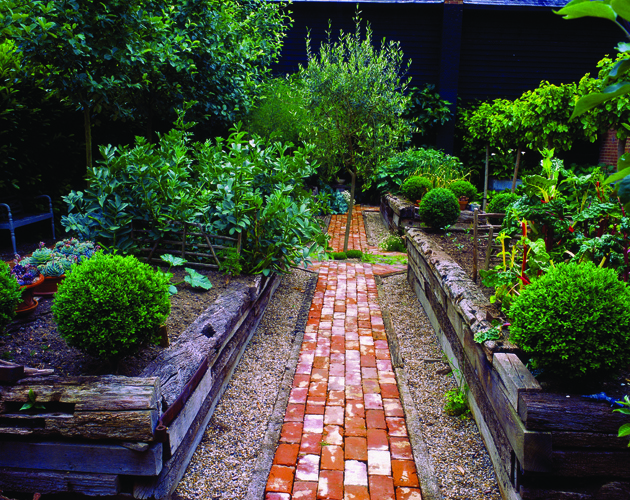Book Excerpt: Raised Bed Revolution

In her book, Raised Bed Revolution: Build It, Fill It, Plant It…Garden Anywhere!, author Tara Nolan has cultivated a guide of expert tips and ideas, some of which we’ve cherry-picked here. With no need to get down to ground level, both you and your space will be taken to the higher ground.
“The emphasis on eating fresh local food over the past few years has really changed the landscape of our towns and cities,” writes Nolan. “Not only are farmers markets more popular than ever before, more and more people are deciding to put their green thumbs to the test and grow their own food at home. This is where innovation and modernization come into play.”
Not just your run of the mill planter
In fact, raised beds can be made in all shapes and styles—rectangles, squares, triangles and circles; ankle- and waist-height; wooden and stone construction. They can even be welded out of steel, aging to a nice rust-colored patina over time or made out of corrugated sheets of steel inset in a wood frame.
Creative DIYers are rescuing materials from scrap heaps, antique markets, behind sheds and underneath decks to upcycle into raised beds. Commonly found items, such as wash basins, stock tanks and recycling bins, are getting a new lease on life as ready-made gardens.
They look good anywhere
As the types of beds have changed, so have their locations. Raised beds are no longer just confined to the backyard. They’re appearing on front and side lawns of residential streets, spaces that were once reserved solely for grass or ornamental plantings. Homeowners are reaping the benefits of that extra space and growing
food to feed their families.
Often the front yard becomes the prime candidate for a raised bed because that’s the spot on the property with the best growing conditions—lots of hot sun! But savvy gardeners are taking advantage of whatever locations they can find.
Next: You don’t need a conventional garden to grow a row of tomatoes
Ease of accessibility
You may have started to see a newer type of raised bed here and there. Called “enabling gardens,” they provide accessible growing spaces and inspiration to those who have various limitations. They help people with cognitive or physical disabilities enjoy the peace, motivation and satisfaction that come from gardening.
Space savers
Which leads to one very important detail about owning raised beds: they prove you don’t necessarily need a conventional yard to grow a row of tomatoes. Because you’re filling raised beds with your own mix of fresh, nutrient-rich soil, they can sit on gravel, pavement, poor soil, roof tops—pretty much anywhere.
And let’s not forget that a great deal of the population lives in urban spaces—or subdivisions with postage stamp-sized lots. Rooftops, balconies and teeny, tiny patios have all become fair game when it comes to locations for growing your own food. This means that gardeners may have to get creative when it comes to what they’re planting in, but options abound. There are all sorts of compact raised beds that can be placed out of the way in a sunny corner. Some even have self-watering systems in place, so they require even less maintenance.
Excerpted from Raised Bed Revolution by Tara Nolan used by permission Quarto Publishing Group USA.
A version of this article appeared in the June 2016 issue with the headline, “Elevated,” p. 60-62.